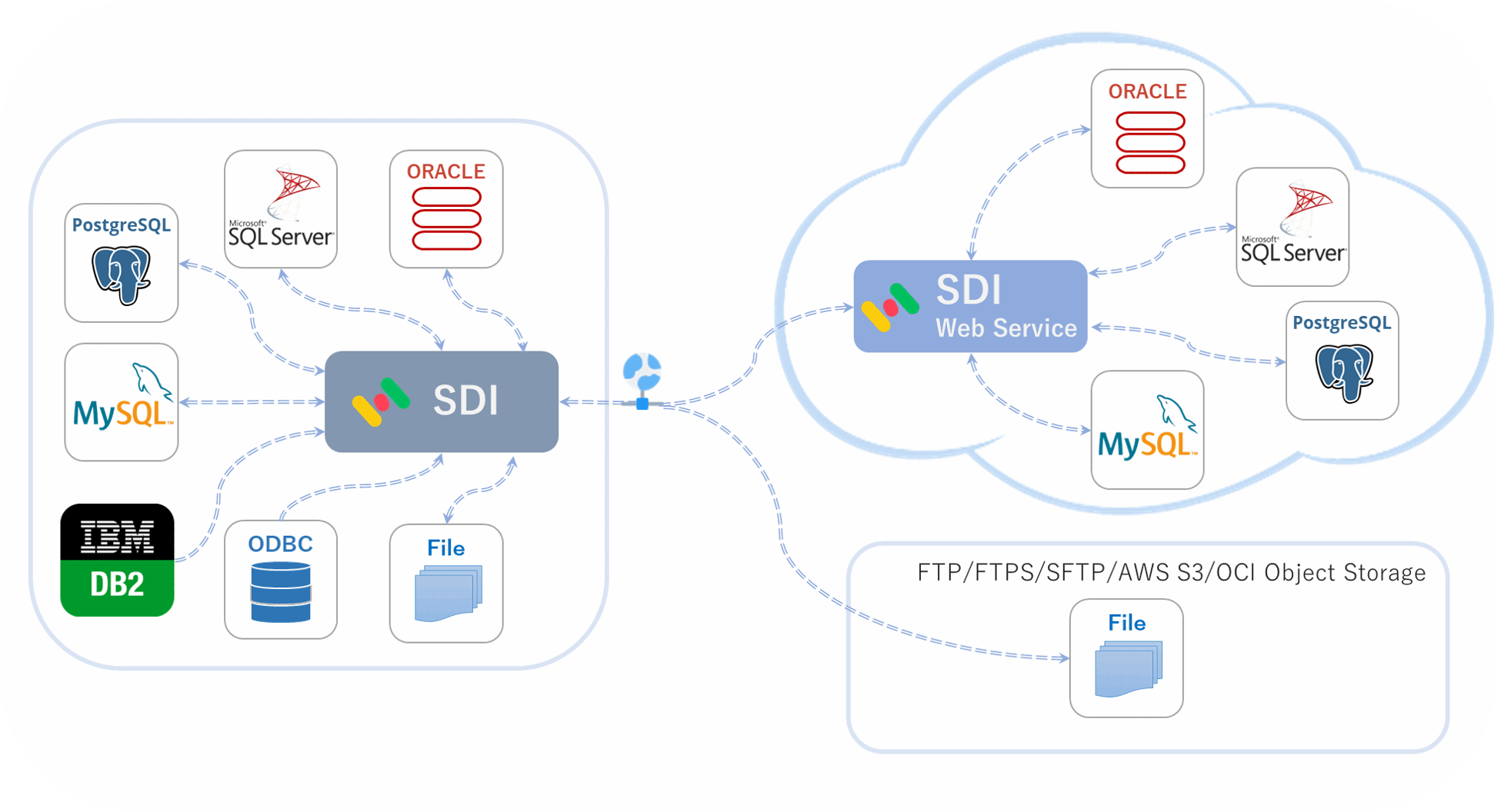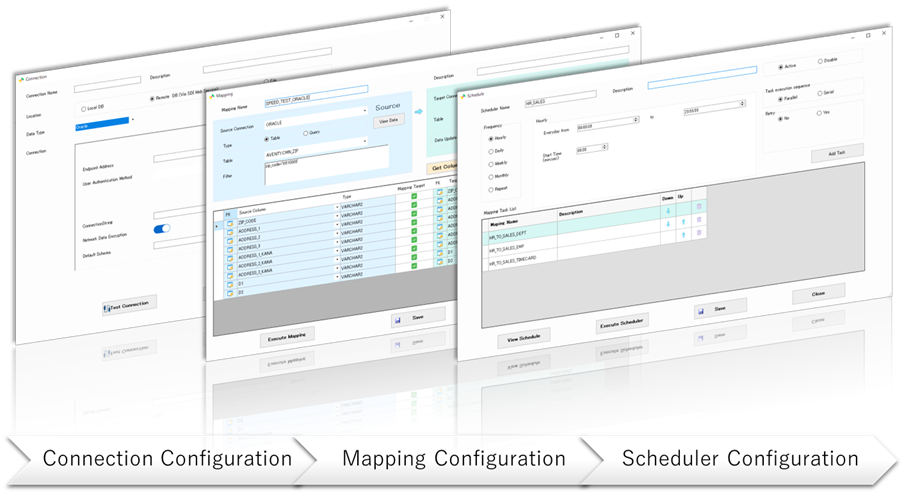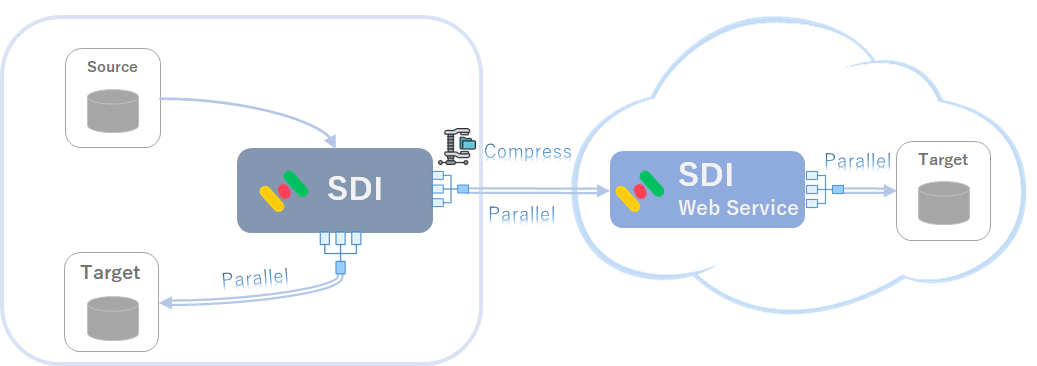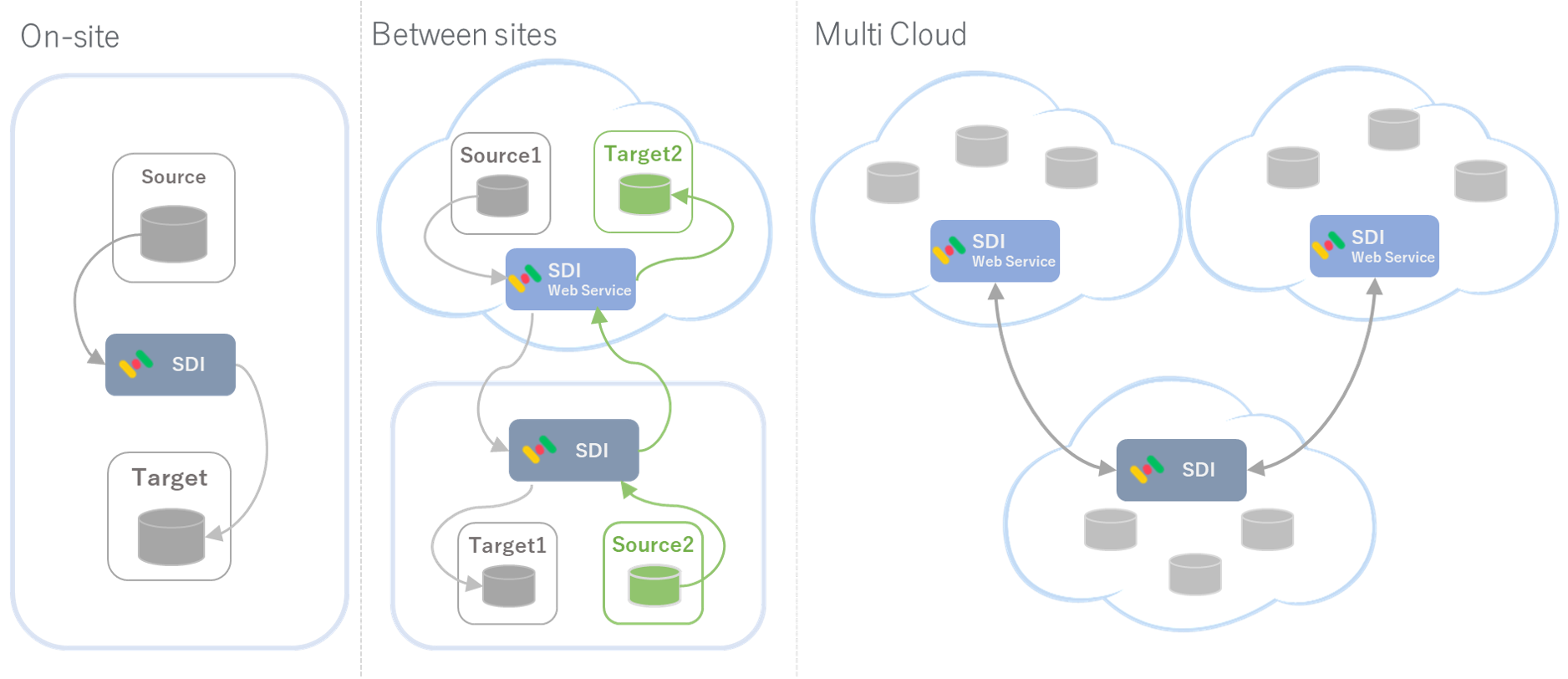Simple. Fast. Powerful.
Simple data integration. High-performance. Rich features.
SDI is a data integration tool that seamlessly connects with Oracle / SQL Server / MySQL / PostgreSQL / DB2, cloud DWHs such as BigQuery / Snowflake, S3 / OCI Object Storage / Azure Blob, and Web APIs. With the built-in scheduler and gateway, you can securely automate workflows within the same site, across multiple sites, and with cloud services.

Key Features
Data Integration
![]() Database-to-database integration
Database-to-database integration
![]() Database–file integration
Database–file integration
![]() Web services / Web API integration
Web services / Web API integration
![]() Execute SQL queries and stored procedures
Execute SQL queries and stored procedures
Workflow & Notifications
![]() Workflow capability
Workflow capability
![]() Chained execution of multiple tasks
Chained execution of multiple tasks
![]() Automated scheduled report delivery
Automated scheduled report delivery
![]() Email / event notifications for run results
Email / event notifications for run results
Scheduler & Triggers
![]() Run hourly, at specific times, weekly, or monthly
Run hourly, at specific times, weekly, or monthly
![]() Run at fixed intervals
Run at fixed intervals
![]() Trigger on file create / update / delete
Trigger on file create / update / delete
![]() Retry capability
Retry capability
Observability
![]() Run history visualization
Run history visualization
![]() Database availability monitoring
Database availability monitoring
![]() Automatic detection of anomalies, missing data, and inconsistencies
Automatic detection of anomalies, missing data, and inconsistencies
SDI Gateway Service
Secure HTTPS-proxy connectivity across sites and clouds
Zero-trust friendly
CLI
Controllable from batch scripts and external jobs
Easy to embed into automation
Supported Data Sources
Why SDI
Simple & Powerful
Set up in a few clicks. Complete integrations in as few as 3 steps. A simple UI with strong extensibility.

High-Performance Architecture
Parallelism, in-memory processing, and compressed transfer keep large volumes fast. Bottlenecks minimized.

Flexible Operations
Supports on-prem, cloud, and hybrid. Cold standby and automatic failover are available.

Use Cases
Internal Systems integration
Integrate and unify data across different formats and RDBs. From master data and transactions through synchronization and aggregation.

Multi-site / multi-cloud integration
Bi-directional, multi-site & multi-cloud integration—keep data consistent across regions while syncing on-prem with public clouds.

Scheduled File Automation
Scheduled generation and auto-ingestion of CSV / Excel / JSON / XML. Supports S3 / Blob / Object Storage.


